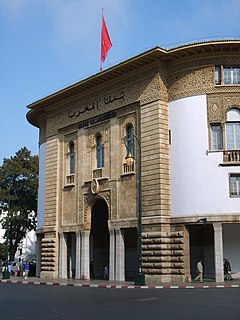
The economy of Morocco is considered a relatively liberal economy governed by the law of supply and demand. Since 1993, Morocco has followed a policy of privatization of certain economic sectors which used to be in the hands of the government. Morocco has become a major player in African economic affairs, and is the 5th largest African economy by GDP (PPP). The World Economic Forum placed Morocco as the 1st most competitive economy in North Africa, in its African Competitiveness Report 2014-2015.
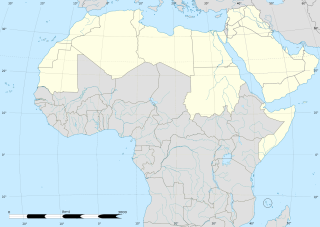
The Arab world, also known as the Arab nation, the Arabsphere, or the Arab states, consists of the 22 Arabic-speaking countries which are members of the Arab League. A majority of these countries are located in Western Asia, North Africa, and the Horn of Africa; the southernmost member, the Comoros, is an island country off the coast of East Africa. The region stretches from the Atlantic Ocean in the west to the Arabian Sea in the east, and from the Mediterranean Sea in the north to the Indian Ocean in the southeast. Arabic is used as the lingua franca throughout the Arab world.

Youth activism is the participation in community organizing for social change by persons between the ages of 15–24. Youth activism has led to a shift in political participation and activism. A notable shift within youth activism is the rise of “Alter-Activism” resulting in an emphasis on lived experiences and connectivity amongst young activists. The young activists have taken lead roles in public protest and advocacy around many issues like climate change, abortion rights and gun violence. Different from past protest or advocacy, technology has become the backbone to many of these modern youth movements. It has been shown in multiple studies that internet use along with seeking information online is shown to have positive impacts on political engagement. Popular applications like Twitter, Instagram and YouTube have become the newest tools for young activist in the 21st century. Technology and the use of digital media has changed the way youth participate in activism globally, and youth are more active in media than older generations.
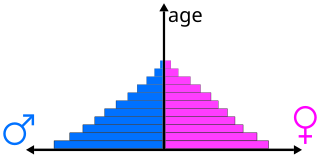
A population pyramid, also called an "age-gender-pyramid", is a graphical illustration that shows the distribution of various age groups in a population, which forms the shape of a pyramid when the population is growing. Males are conventionally shown on the left and females on the right, and they may be measured by raw number or as a percentage of the total population. This tool can be used to visualize and age of a particular population. It is also used in ecology to determine the overall age distribution of a population; an indication of the reproductive capabilities and likelihood of the continuation of a species.

Media activism is a broad category of activism that utilizes media and communication technologies for social and political movements. Methods of media activism include publishing news on websites, creating video and audio investigations, spreading information about protests, or organizing campaigns relating to media and communications policies.
The Universal Declaration of Human Rights has emphasized education's importance as a fundamental human right and a necessary element of development. Education encompasses the scope of social values, morality, tradition, religion, politics and history. It is the acquired body of knowledge that equips the emerging labor force with the necessary skills to ensure its active participation in economic development. The acquisition of literacy, arithmetic, and problem-solving skills improves the value and efficiency of labor. It creates a skilled and intellectually flexible labor force through training, expertise, and academic credentials. A professional working force enhances the quality of a nation's economic productivity and guarantees its suitability for global market competitiveness. According to a recent research report by the United Nations Population Fund, countries such as Egypt, Jordan, and Algeria have invested in family planning, healthcare, and education and have subsequently experienced more rapid economic development than the countries that were reluctant to invest in social development programs.

Lebanese women enjoy almost equal civil rights as men. However, due to the large number of officially recognized religions in Lebanon, Lebanese family matters are governed by at least 15 personal statute codes. Lebanese women have legal protection that varies depending on their religion. In Muslim families, marriageable age can be as soon as the child reaches puberty and polygamy is allowed. Muslim women can legally marry Christian or Jewish men; for example a Lebanese Catholic man can marry a Muslim lady on the condition of getting their children baptised, otherwise, the couple may opt for civil marriage performed abroad, which can be registered at any Lebanese Embassy, thus giving it official recognition.

Youth exclusion is a form of social exclusion in which youth are at a social disadvantage in joining institutions and organizations in their societies. Troubled economies, lack of governmental programs, and barriers to education are examples of dysfunctions within social institutions that contribute to youth exclusion by making it more difficult for youth to transition into adulthood. European governments have recently recognized these shortcomings in societies organizational structures and have begun to re-examine policies regarding social exclusion. Many policies dealing with social exclusion are targeted at youth since this demographic of people face a transition into adulthood; defining career and lifestyle choices that will affect the future culture and structure of a society.
Belize's social structure is marked by enduring differences in the distribution of wealth, power, and prestige. Because of the small size of Belize's population and the intimate scale of social relations, the social distance between the rich and the poor, while significant, is nowhere as vast as in other Caribbean and Central American societies, such as Jamaica and El Salvador. Belize lacks the violent class and racial conflict that has figured so prominently in the social life of its Central American people.
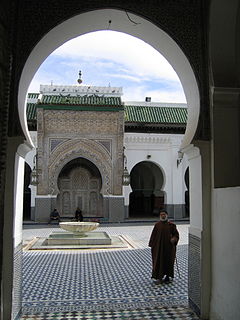
Science and technology in Morocco has significantly developed in recent years. The Moroccan government has been implementing reforms to encourage scientific research in the Kingdom. While research has yet to acquire the status of a national priority in Morocco, the country does have major assets that could transform its R&D sector into a key vehicle for development. The industry remains dominated by the public sector, with the universities employing 58% of researchers. Morocco's own evaluation of its national research system – carried out in 2003 – revealed that the country has a good supply of well trained high quality human resources and that some laboratories are of very high quality. However, the greatest gap at that point of time lied in the link between research and innovation. The educational qualifications of Moroccan researchers have increased significantly since the early 1990s. The University of Al-Karaouine is considered the oldest continuously operating academic degree-granting university in the world, by the Guinness Book of Records.
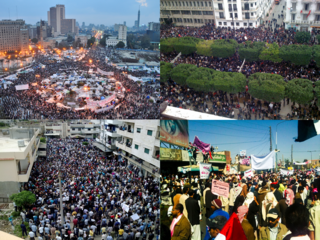
The Arab Spring was a series of anti-government protests, uprisings, and armed rebellions that spread across much of the Arab world in the early 2010s. It began in response to oppressive regimes and a low standard of living, starting with protests in Tunisia. The protests then spread to five other countries: Libya, Egypt, Yemen, Syria and Bahrain, where either the regime was toppled or major uprisings and social violence occurred, including riots, civil wars or insurgencies. Sustained street demonstrations took place in Morocco, Iraq, Algeria, Iranian Khuzestan, Lebanon, Jordan, Kuwait, Oman and Sudan. Minor protests occurred in Djibouti, Mauritania, the Palestinian National Authority, Saudi Arabia, and the Moroccan-occupied Western Sahara. A major slogan of the demonstrators in the Arab world is ash-shaʻb yurīd isqāṭ an-niẓām.

Youth unemployment is the situation of young people who are looking for a job, but cannot find a job, with the age range being that defined by the United Nations as 15–24 years old. An unemployed person is defined as someone who does not have a job but is actively seeking work. In order to qualify as unemployed for official and statistical measurement, the individual must be without employment, willing and able to work, of the officially designated "working age" and actively searching for a position. Youth unemployment rates tend to be higher than the adult rates in every country in the world.
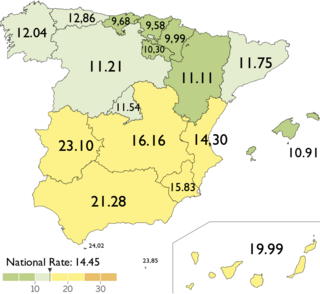
Unemployment rates in Spain vary across different regions of the country, but they tend to be higher when compared to other Western European countries.

Policies advocating Middle East economic integration aim to bring about peace, stability, and prosperity in the Middle East, which they believe can only be sustained over the long run via regional economic cooperation.

Youth in Brazil includes Brazilians aged 15 to 24 or 33, depending on the definition of youth. Youth account for 16.5% of the population in Brazil which is, 202,656,788 people. There are 16,993,708 male youth and 16,521,057 female youth in Brazil.
Science and Technology is Jordan's fastest-growing economic sector. This growth is occurring across multiple industries, including information and communications technology (ICTs), solar and wind energy and nuclear technology.

Youth in Hong Kong, according to the University of Hong Kong Statistical Profile, includes citizens of the Chinese territory of Hong Kong aged 15–24 years. As of 2011, youth in Hong Kong ages 15–24 made up 12.4 per cent of Hong Kong's overall population at 875,200 people. Hong Kong is a hybrid culture, influenced by China and Britain, but overall by its international economic ties and neoliberal policies, which plays a role in shaping the lives of the youth in Hong Kong. The youth in Hong Kong is unique in the fact that many are living Transnationalist identities. The demographics are not just ethnically Chinese youth in Hong Kong, but also youth that are ethnically white, Indonesian, Filipino, which can be seen in Demographics of Hong Kong, and that creates a unique society. "Although with a dominant Chinese population, Hong Kong is an international city and is a mix of East and West rich in cultures, history, and religions." The disparity between the rich and poor within Hong Kong has been growing wider.
Overall, Africa has about 9% of the world's fresh water resources and 16% of the world's population. However, there is very significant inter-and intra-annual variability of all climate and water resources characteristics, so while some regions have sufficient water, Sub-Saharan Africa faces numerous water-related challenges that constrain economic growth and threaten the livelihoods of its people. African agriculture is mostly based on rain-fed farming, and less than 10% of cultivated land in the continent is irrigated. The impact of climate change and variability is thus very pronounced. The main source of electricity is hydropower, which contributes significantly to the current installed capacity for energy. Continuing investment in the last decade has increased the amount of power generated.

The digital divide is an economic and social inequality with regard to access to, use of, or impact of information and communication technologies (ICT). Factors causing the divide can vary depending on the country and culture, as can the potential solutions for minimizing or closing the divide.
The Demographics of the Middle East and North Africa (MENA) region show a highly populated, culturally diverse region spanning three continents. As of 2018, the population was nearly 578 million. The class, cultural, ethnic, governmental, linguistic and religious make-up of the region is highly variable.pew pew
















